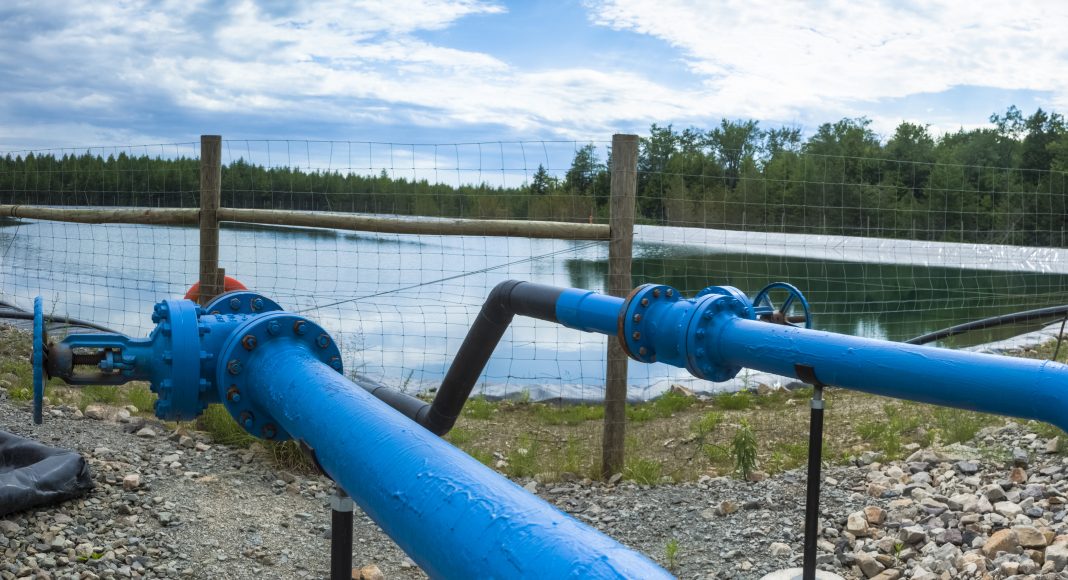A new study finds that fracking can lead to increased salt levels in water surfaces, especially during the early stages of production and in areas where water monitors are closest to wells.
The use of hydraulic fracturing, commonly referred to as fracking, has had a large impact on the US energy sector. Over time, it has helped increase production of oil and natural gas, lowering US dependence on imports, creating jobs, and helping lower energy prices. However, fracking is also highly controversial, as it has been linked to health and environmental concerns. During his 2020 campaign, President Joe Biden said he would impose stricter regulations on fracking and, days after taking office, ordered a moratorium on new oil and gas leases on federal land and water areas. Biden has, however, opposed a complete ban on fracking, supported by other Democrats, including Senators Elizabeth Warren (D-MA) and Bernie Sanders (I-VT) as well as Vice President Kamala Harris.
In the process of fracking, water, sand, and a combination of chemicals are forced into ground under high pressure to fracture the rocks and extract natural gas. The excess water from drilling is then injected back into the ground via a disposal well. Opponents of fracking have long raised concerns over the potential groundwater contamination, a claim that has been documented by previous studies. New evidence, however, shows that fracking can reduce surface water quality as well.
A recent study by Pietro Bonetti from the University of Navarra, Christian Leuz from the University of Chicago, and Giovanna Michelon from the University of Bristol, published in Science, linked fracking to small increases in salt in surface waters like streams and rivers for many shales and watersheds across the United States.
“Our work provides the first large-sample evidence showing that hydraulic fracturing is related to the quality of nearby surface waters for several US shales,” Leuz, the Joseph Sondheimer Professor of International Economics, Finance and Accounting at the University of Chicago’s Booth School of Business (and a member of ProMarket’s advisory board), said in a press release.
Working with a database that combined surface water measurements with 46,479 fracking wells, the authors used a statistical approach to identify changes in water quality. The wells were located on 24 shales across 408 watersheds. Data was collected from 2006 to 2016.
- “In areas where there were new hydraulic fracturing wells there were also elevated salt concentrations in waters.”
- The greatest increases in salt concentration were recorded “91-180 days after drilling began … during the early phases of production when large amounts of flowback and produced water are collected”
- “The salt concentrations were most pronounced for wells with larger amounts of produced water, further drawing the tie between elevated salt concentrations and hydraulic fracturing activities.”
- There were “very small but consistent increases in barium, chloride and strontium concentrations, but not bromide.”
The elevated levels recorded by the study were well below what the Environmental Protection Agency (EPA) considers harmful.
While the evidence suggests that fracking had a small impact on surface water quality, the authors emphasized that this could be due to the distance from the well to the water, since not all wells were close to surface water and “not all monitors are in a location where they could detect an effect (e.g., the closest monitor could be upstream)”. The salt levels were highest at monitoring stations within 15 kilometers (9 miles) and (likely) downstream from a well, according to the study.
The authors urged policymakers to increase measurements during the early stages of production, when the impact is greatest, and to collect data on other chemical substances contained in the fracking fluid. These substances are potentially more dangerous than salts but are not widely included in public databases.
“Policymakers could consider more targeted water measurement,” Michelon said in a press release. “For instance, policymakers could place monitoring stations in locations where they can better track surface water impacts, increase the frequency of measurement around the time new wells are drilled, and more systematically track the other chemical substances found in fracking fluids.”
Learn more about our disclosure policy here.






